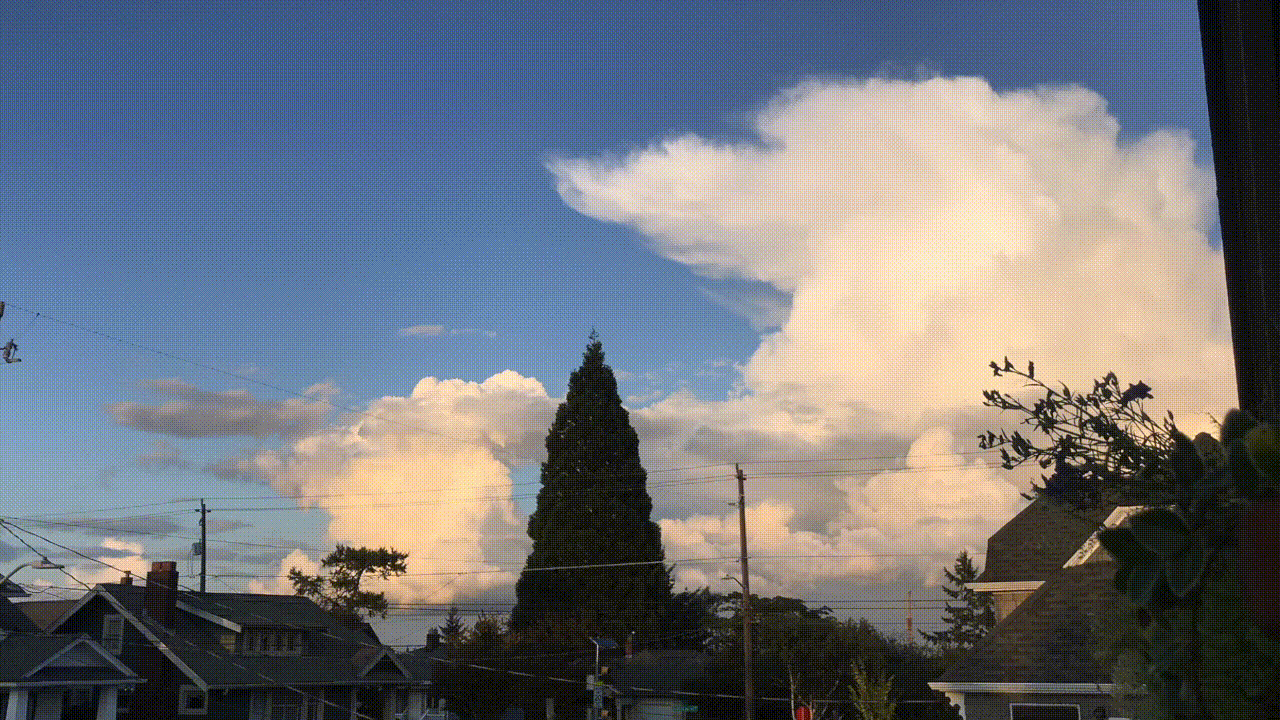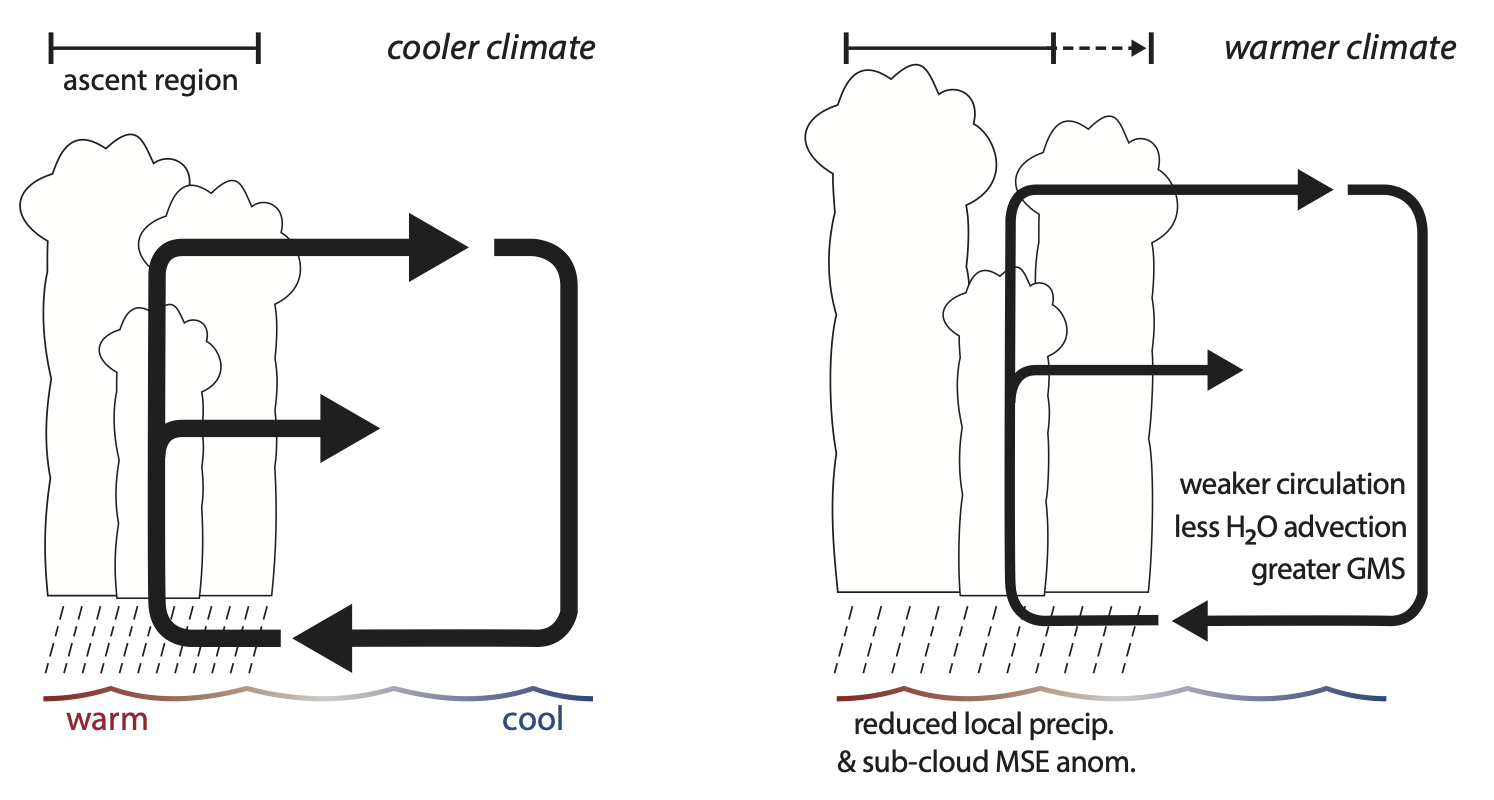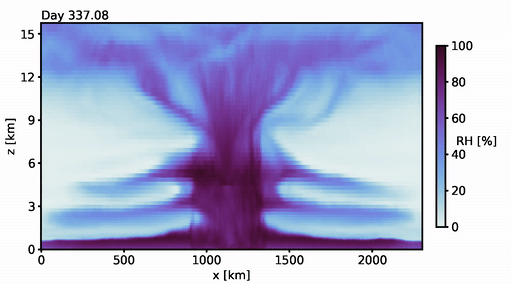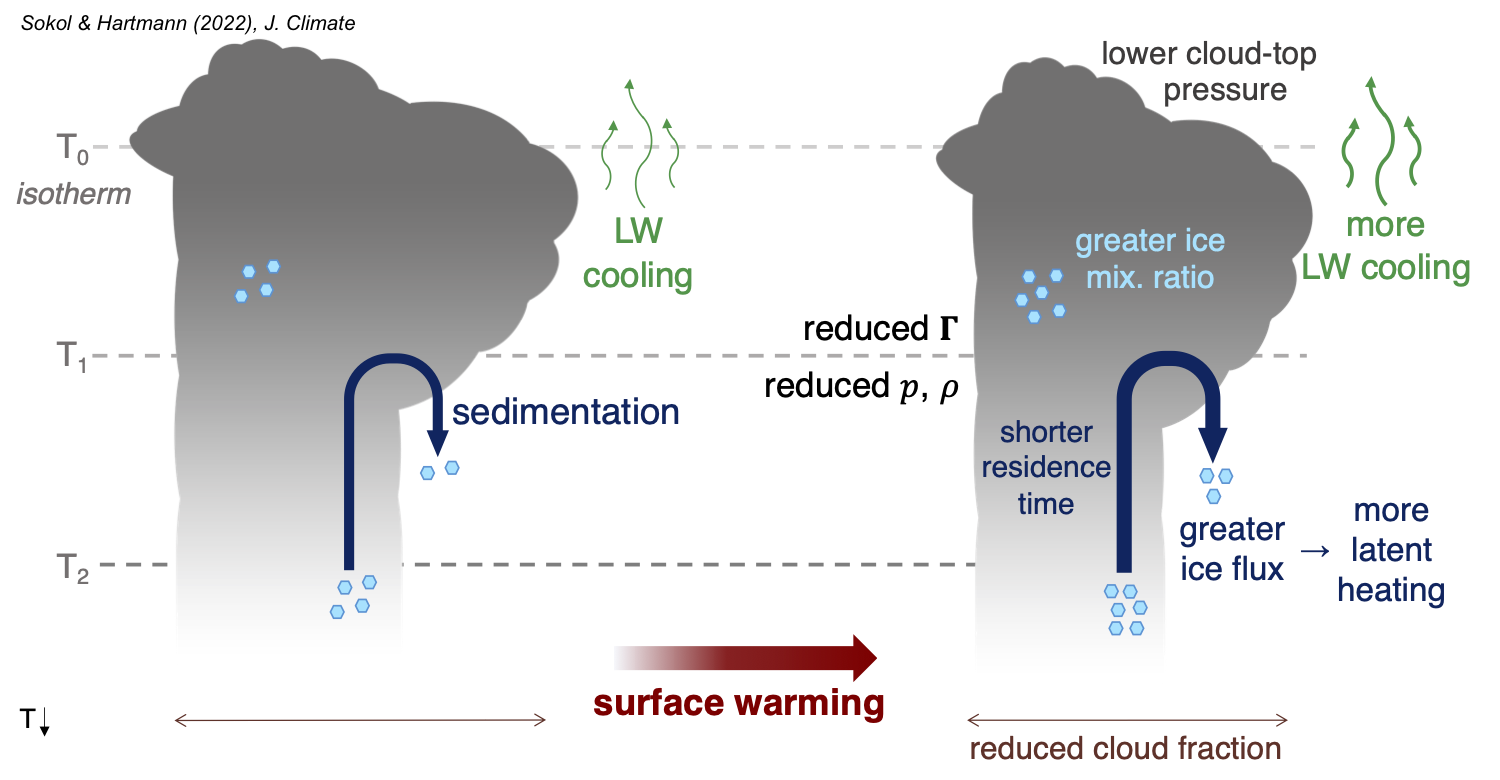Clouds & Climate
Tropical deep convection produces a wide range of cloud types. Different parts of these cloud systems exert strong positive and negative radiative effects, but the climatological radiative effect of tropical convection is near zero. This balance results from a very specific distribution of convective cloud types, and we are unsure of how it will be affected by climate change. If the radiative balance of tropical convection shifts in the future, it could constitute an important climate feedback.
My work uses a variety of tools to understand the distribution, life cycle, and climate impact of tropical convective clouds. Satellite observations have revealed that the most common anvil clouds in the Tropics are those with the strongest warming effect on climate. Using a radiative transfer model and satellite retrievals of cloud microphysics, we found that these clouds are selectively maintained by radiative heating. Here is the paper in JGR-Atmospheres.
Using satellite measurements and a cloud-resolving model, we have also found that anvil clouds produced during the day have a longer lifetime and a different climate impact than those produced at night. Read that paper here.
More recently, we've studied how convective clouds respond to surface warming in a the RCEMIP ensemble of cloud-resolving models. Our findings suggest that the anvil cloud area feedback is near zero and that the optical depth feedback is slightly positive—which has some important implications for estimates of climate sensitivity. Check out my climate sensitivity symposium talk on this work or our paper in Nature Geoscience.
I have also studied the spatial heterogeneity of cloud phase in mixed-phase clouds around the world. This work was motivated by the need to improve the partitioning of mixed-phase clouds in climate models, since biases in phase partitioning lead to biases in radiative fluxes. Using single-shot profiles from the CALIOP lidar, we quantified cloud phase heterogeneity on a global scale and hypothesizes that the increased availability of ice nucleating particles during the spring leads to more heterogeneous cloud phase at that time of year. Here is the paper in JGR-Atmospheres.



